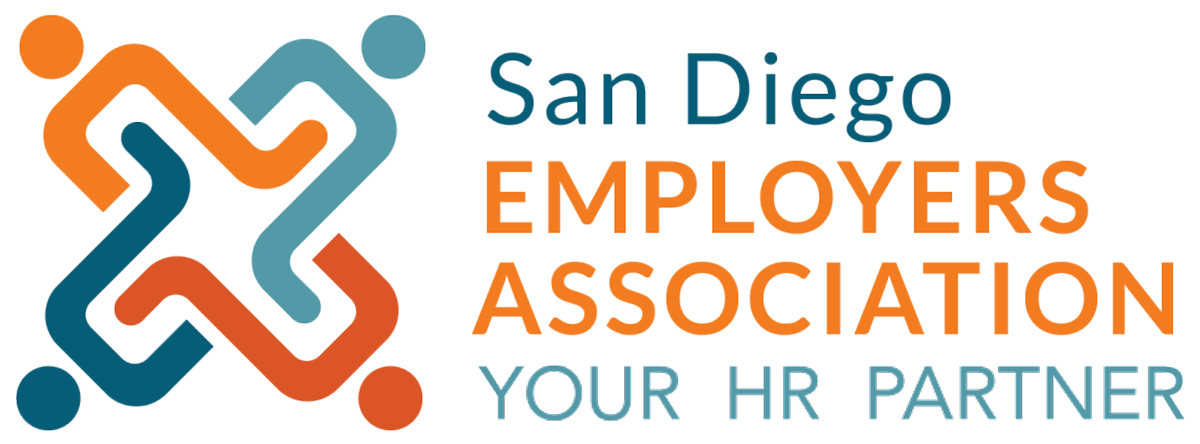8.31.23
By Jennifer Jacobus, PHRca, SDEA Director of HR Services. 
Last week SDEA was pleased to welcome back Claudia Martorell and Amanda Mullane, both shareholders for Ogletree Deakins, to provide yet more I-9 updates that included a review of the new Form I-9 as well as a review and Q&A on the Virtual Alternative Inspection Procedure.
So, let’s compare notes, shall we?
- First, the new I-9 (expiration date 7/31/2026) was effective August 1, 2023 but employers have until October 31, 2023 to continue to use the “old” I-9. Good news for employers using electronic I-9 processes through a vendor since this will allow those vendors to be compliant with new I-9 updates.
- Remember those requirements to include, in some but not all fields ‘n/a’ when that particular field was not applicable? That is The new I-9 does not require the use of ‘n/a’.
- In an effort to make the new I-9 more user-friendly (insert eye-roll), the instructions for completing the form have been condensed.
- We are back to a one-page document for the initial I-9. While no fields have been removed, the form has been structured differently. The Preparer/Translator portion of the form is now a separate supplement, as is the Reverification/Rehire section.
- The list of Acceptable Documents has been updated. While even older versions of the I-9 did not include ALL acceptable documents (same holds true for the newly updated I-9), this I-9 form includes examples of when it is acceptable to accept receipts.
- Participants in the webinar were reminded about the “reasonable person standard” when reviewing documents and focus on obvious signs of tampering. These may include spelling errors of state or federal agencies, odd fonts, blurry fonts or pictures that obviously do not match the employee. Again, proceed with caution, employers are not expected to be document experts but are expected to do their due diligence.
- Employers that are in good-standing and are actually using E-Verify, may virtually review documents for the I-9. This is referred to as the “alternative procedure”.
- Employers using E-Verify are NOT REQUIRED to use the alternative procedure. Participants in the webinar were strongly encouraged to develop a policy for who the alternative procedure will apply to. Employers can use this process for all employees, even those not working remotely, or just remote workers and continue with the traditional verification process with your ‘in-person’ employees. What you CANNOT do is, for example, require all foreign documented workers to come into the office,. That can be viewed as discriminatory.
- For those employers looking to enroll in E-Verify, expect to spend about 2.5 hours in the enrollment process, this includes mandatory training.
- The alternative procedure is similar to the in-person process in many ways. Employees will need to provide copies of the documents they are using to comply with the I-9 verification process. Since these documents will most likely be sent electronically, employers should strongly consider secure portals for this process. Employers will then conduct a live interaction with the employee and examine the same documents the employee originally provided.
FAQs
Is it possible for an employer to meet requirements for alternative procedure for the COVID-19 updates for part of the impacted I-9 forms? Yes, an employer may use the alternative procedure in lieu of physical inspection for COVID-19 updates for those I-9s where it met the qualifying criteria.
Why is DHS requiring employers that meet the criteria to use the alternative procedure for the COVID-19 updates to view documents again virtually? This seems duplicative. DHS defined additional required steps for the alternative procedure that were not required by the COVID-19 flexibilities. It has determined that virtual document inspection with these additional steps is an equivalent level of security to in-person document inspection.
Has the deadline for COVID-19 updates changed with this new alternative procedure option? No, the deadline for compliance remains August 30, 2023.
What if an employee prefers to provide physical copies of I-9 documentation rather than follow the alternative virtual document inspection procedure? Can the employer require the employee to comply? DHS has clearly indicated that employees who are unable or unwilling to submit documentation following alternative procedure must be permitted to submit documentation for physical examination.
Employers must retain copies of I-9 documents if they elect to use the alternative for I-9 completion. For those I-9s completed using the traditional in-person document inspection, is an employer then required to keep copies of I-9 documents? No, that is not a requirement. It is important to note that the decision on the issue must be applied consistently. Additionally, E-Verify has document retention requirements that are separate from the I-9 process.
Employers that enroll in E-Verify and any users who manage and create E-Verify cases must complete the E-Verify training, which includes fraud awareness and anti-discrimination training. For employers that are existing users, will new training in these areas be required? At this time, the answer appears to be “no” per DHS guidance and at this time the rule does not require training for authorized representatives.
SDEA members have unlimited access to HR consultants. If you have any questions on the above, or anything else, please reach out; 858-505-0024. Remember we are your HR Partner, we are HeRe with you, not just for you.





